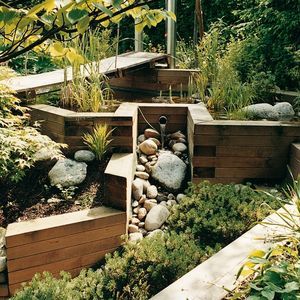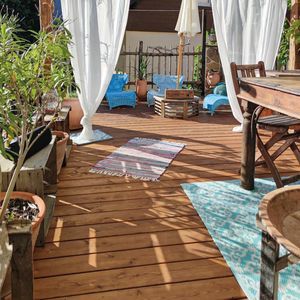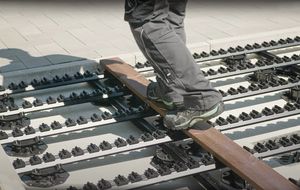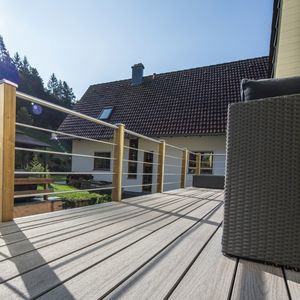
Ipe deck board 820 serieswood lookFSC certifiedPEFC certified







Add to favorites
Compare this product
Characteristics
- Material
- ipe
- Options
- wood look
- Ecological characteristics
- FSC certified, PEFC certified
Description
Ipé (botan. tabebuia serratifolia, tabebuia spp.) is a hardwood tree growing in Northern South America. It is part of the family of catalpas (bignoniaceae). Ipé is also known as the Brazilian walnut. The trunks reach a height of 20 to 40 m and diameters of 60 to 100 cm. The branch-free lengths are at 8 to 15 m. Other known trade names are: Guayacán or Lapacho.
pé is known as one of the hardest natural woods and is also called "ironwood". Its properties such as durability and hardness are outstanding. According to resistance class 1, Ipé is one of the naturally most durable wood types in the world.
The long sea transport in closed containers may cause discolouration or small mould formation. These can be brushed or washed off after installation. Colour differences adjust under UV light.
Ipé has a brown-yellow to olive colour that, as in all wood types, will acquire a naturally grey patina if subjected to UV light for a while. This greying can only be reduced by repeated pigmenting painting with a care oil. B&W-hardwood care oil is particularly good for this.
Only use stainless steel when processing Ipé and always cover the surrounding wood during metal work. Flying chips may cause black discolouration. Fresh cuts must be impregnated. Our hardwood cut protection reduces tearing at the front face.
DECKING
Generally branch-free sorting
Artificially dried
Unilaterally serrated
Unilaterally planed
Ipé, Resistance class 1
Catalogs
No catalogs are available for this product.
See all of Braun Wuerfele‘s catalogsRelated Searches
- Flower box
- Outdoor flower box
- Pergola
- Rectangular flower box
- Self-supporting pergola
- Square flower box
- Modern pergola
- Custom pergola
- Decking
- Wood planter
- Custom planter
- Wooden deck board
- Commercial decking board
- Wood look decking board
- Sustainable decking board
- Wood pergola
- Traditional planter
- Grooved decking board
- Wooden canopy pergola
- FSC certified decking
*Prices are pre-tax. They exclude delivery charges and customs duties and do not include additional charges for installation or activation options. Prices are indicative only and may vary by country, with changes to the cost of raw materials and exchange rates.










